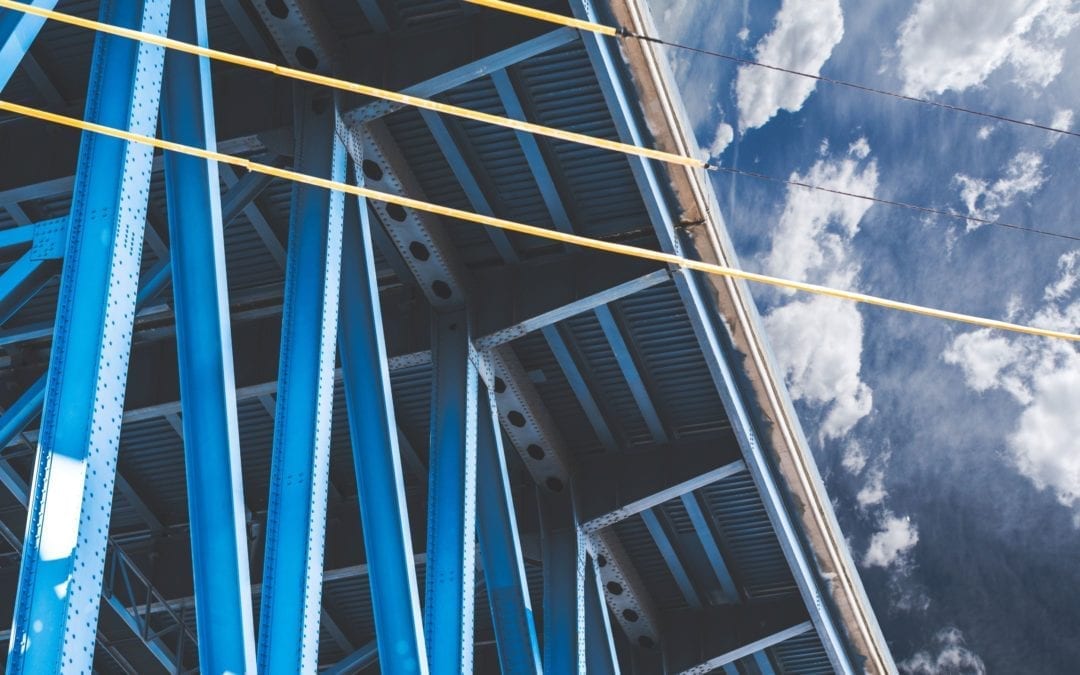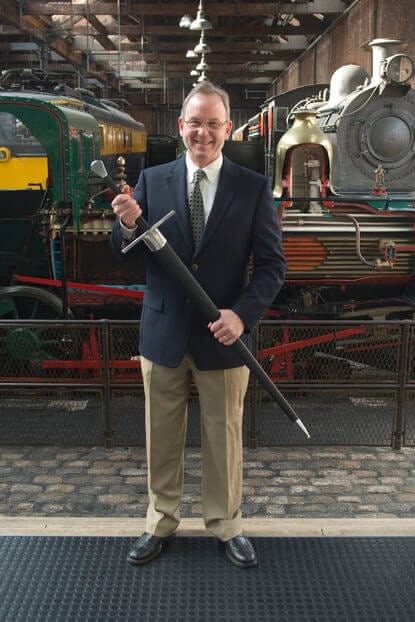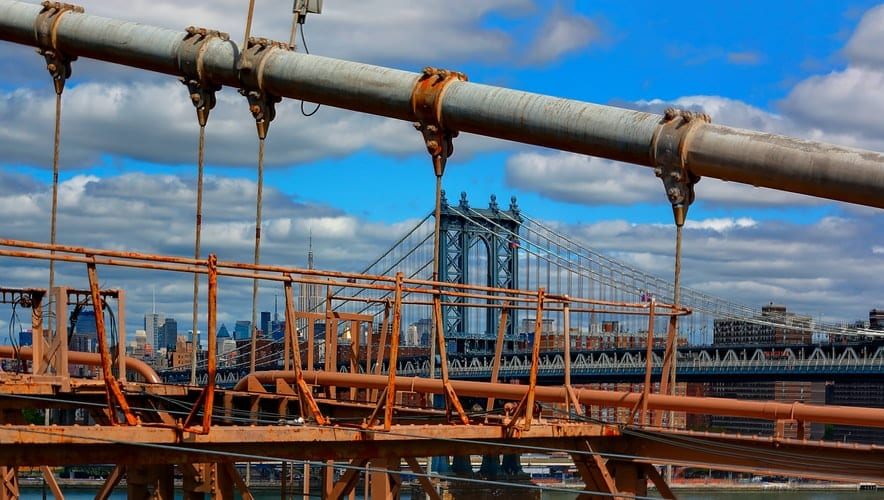Corrosion must be considered early in the design of steel structures
If left unprotected in corrosive environments, steel structures are liable to corrosion that can be both costly and put lives in danger. One way to control corrosion is to use paints and coatings. ISO 12944 is the internationally recognised standard that provides instruction and guidance to those working with steel structure design, including planners, painters, inspectors, maintenance, and manufacturers of coatings.
The third part of the standard provides guidance to those designing steel structures that are to be coated with protective paint systems, setting the criteria for design to avoid premature corrosion of the asset.
Why is steel structure design important?
How a steel structure is designed has a real bearing on the ability to protect it against corrosion. Poorly designed structures may have corrosion traps which are difficult to protect and from which corrosion can spread rapidly. To help prevent this, designers should consult with corrosion experts as early as possible in the design phase to consider the following elements of design that may affect corrosion:
- The shape of the structure
- The use of the structure
- Structural elements such as method of joining
- Environmental factors
Effective design of steel structures
The basic steel structure design criteria that may be exposed to corrosive environments include keeping the design simple and minimising surfaces that may be exposed to corrosive pressures. The designer will need to ensure that maintenance and inspection work is facilitated by the design, that appropriate joins are made, and that they consider how the structure will be transported and erected.
Here are the primary areas of concern that this section of ISO 12944 covers (but is not limited to):
· Accessibility
Those who are applying, inspecting and maintaining coatings need access to the areas to be protected for their work to be effective. Design should allow this; for example, by providing for fixed walkways and the fitting of maintenance equipment (such as anchorages for scaffolding).
Safety of all operators should also be considered when designing for accessibility. For example, the surfaces to be coated and maintained should not only be accessible, they should also be within safe, easy reach and with plenty of space to work in.
In box members and tanks, openings should be large enough to allow easy access, and ventilation holes should be included.
· Prevention of trapped water
Designers should incorporate design elements to prevent water being trapped and where foreign matter may combine to increase the potential for corrosion. Design features that might be considered include inclined surfaces, drainage systems, and chamfered edges.
· Welding and bolting
The standard also makes it clear that welding should be clear from imperfections that make it difficult to protect effectively. Bolts, nuts and washers should be protected against corrosion, and to the same protection durability as the structure itself.
· Treating gaps
Narrow gaps and blind crevices are particularly prone to potential corrosion, as they tend to retain moisture, foreign bodies and soluble salts. Very narrow crevices such as the enclosed spaces between two back-to-back flat surfaces can take up moisture by capillary action. The oxygen-deficient conditions within the crevice can set up an aggressive accelerated electrochemical concentration cell, leading to rapid pitting within the crevice. This type of corrosion is particularly dangerous as it is not visible (possibly until a structural failure), and the lack of access makes it very difficult to detect and repair.
Either filling or sealing will be needed to prevent corrosion in these gaps, with welding also used. Where steel transitions to concrete, the designer will need to pay specific attention to ensuring that gaps are treated.
Treating Sharp Edges
Liquid coatings in common with other liquids display surface tension. The surface tension of an applied coating film can cause the coating to pull away from a sharp edge (e.g. the edge of a splice plate or the flange toe of an I-section girder), resulting in a reduced film thickness along the sharp edge compared to the same system applied on a surrounding flat area. Sharp edges can therefore be vulnerable to premature breakdown unless they are given a supplementary coat(s) of protective coating (so-called ‘stripe coat’), or the design of the structure incorporates the provision for grinding of sharp edges, to provide a radiused edge profile which will allow the coating to follow the edge without a reduction in film thickness.
· Preventing galvanic corrosion
Galvanic corrosion is possible should an electrically conducting joint exist between two dissimilar metals, with the less noble of the two metals corroding subsequently. The standard provides instruction on the type of joints that should be used to avoid this, but where it cannot be avoided then the surfaces should be electrically isolated by painting of both surfaces. However, cathodic protection may also be employed to protect against electrochemical corrosion.
· Transportation and erection
Design of a structure should also consider how it will be transported and erected, as there will be potential for damage to occur to the corrosion protection used. The designer should include lifting points and fixings that may be needed to transport and erect the structure.
Summary
In summary, corrosion must be considered during steel structure design. The designer should enlist the advice of a corrosion expert, and deliver a structure whose design does not hinder the correct application and inspection of the specified corrosion protection coating system, coupled with subsequent inspection and maintenance of the corrosion protection measures.
In providing guidance and instruction for the design of steel structures liable to corrosion across a range of applications and in a range of corrosive environments, ISO 12944 provides recommended minimum dimensions for:
- Accessibility
- Openings for access to confined areas
- Narrow spaces between surfaces
- Treatment of gaps
It also provides detailed examples for design features to avoid retention of water and deposits, avoidance of sharp edges, and stiffener design.
If design considerations for corrosion protection are not implemented early enough in the design process, there is a greater chance that the structure will be adversely affected by corrosion. This will certainly result in greater expense in the long term, while increasing the potential for avoidable human cost.
It is far more cost-effective to implement corrosion protection on a ‘right first time’ principle rather than having to implement costly maintenance procedures later in the life of the asset. It must be borne in mind that maintenance does not just mean the cost of labour and materials for repainting the asset. Factors such as installing scaffolding and shutting down areas of a working asset could significantly multiply the cost of a maintenance project. In our next article in this series covering ISO 12944, we discuss part 4 of ISO 12944: types of surface and surface preparation. In the meantime, to learn about the Institute of Corrosion Coating and Inspection Training Courses – presented by IMechE Argyll Ruane and Corrodere – contact us today.




